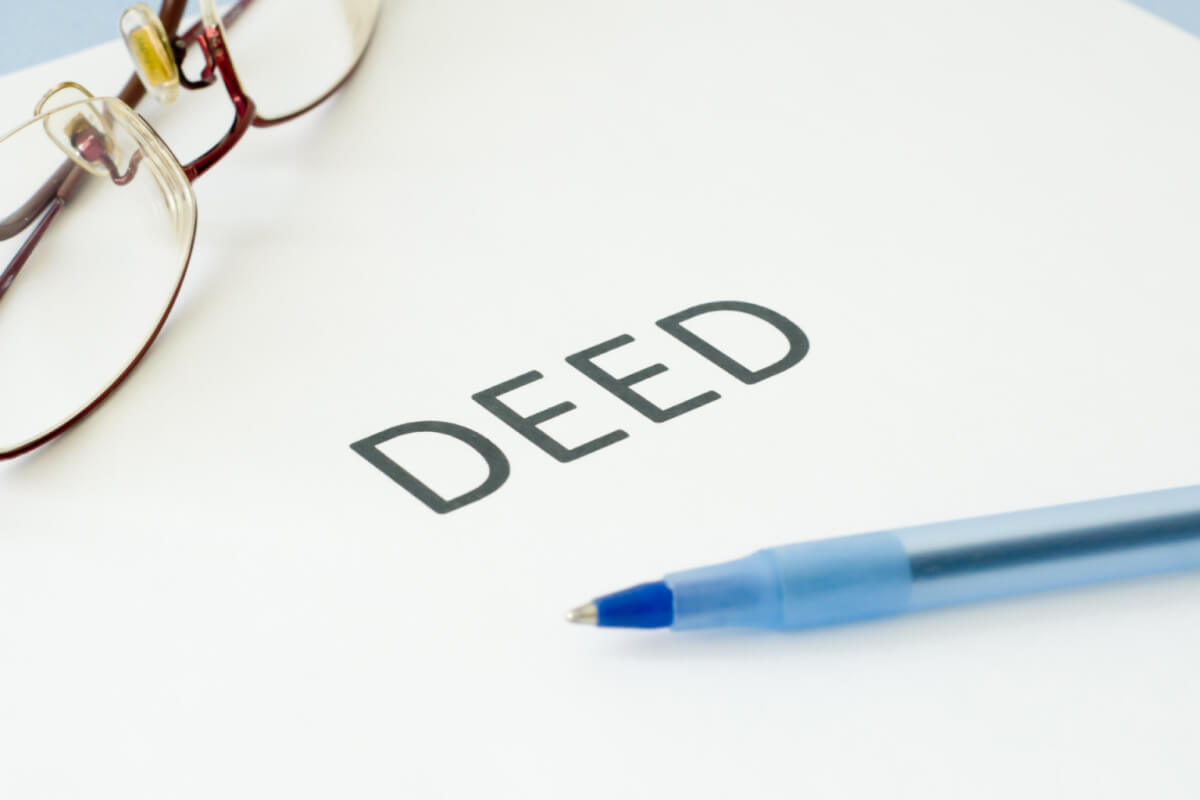There are online tutorials these days for everything from installing a door to drafting legal documents like wills or deeds. With the advent of generative AI programs like ChatGPT, it can be tempting to DIY all sorts of things in hopes of saving a few dollars.
But creating estate planning documents isn’t like figuring out how to shim your door frame or set the hardware correctly. Sure, you could follow the instructions, navigate the form fields, and secure the notarizations, but should you?
When they aren’t executed properly, even “simple” estate planning documents like ladybird deeds carry long- and short-term risks. Let’s look at the steps involved—and the potential complications of taking a DIY approach.
What is a ladybird deed?
A ladybird deed, also known as an enhanced life estate deed, is a type of deed that allows property owners to retain control and use of their property during their lifetime while designating beneficiaries to inherit the property automatically upon the owner’s death.
Because of their unique characteristics, only five states allow ladybird deeds to be used in estate planning: Texas, Florida, Michigan, Vermont, and West Virginia.
A ladybird deed helps both the grantor (or life tenant) and the recipient (known as the remainder beneficiary) in several ways:
- Utilizing a ladybird deed keeps a valuable asset out of Medicaid eligibility calculations, which is important as many individuals rely on Medicaid to pay for long-term care.
- A ladybird deed (versus a traditional life estate deed or trust) allows the life tenant to retain full control over their property during their lifetime. They can live in and manage the property as they see fit without having to get permission from a trustee.
- Ladybird deeds are also revocable, which means the owner could sell the property if they want to and keep the proceeds of the sale for themselves.
- Ladybird deeds can be signed under powers of attorney (Transfer on Death Deeds cannot).
- Ladybird deeds in Texas do not have to be immediately recorded (though it may be best practice).
How does the ladybird deed process work?
There are several steps involved in creating a ladybird deed in Texas. While ladybird deeds are not as complicated as some other types of estate plans, it’s important to carefully complete each step to ensure your deed will withstand legal scrutiny and inquiries from title insurance companies.
Step 1: Draft the deed
The first step is to create a draft using a Texas ladybird deed form. However, If you don’t have a form that is state specific, that hasn’t been provided by a reputable third party, we recommend you work with an attorney. There are risks in using third party forms and altering them.
You’ll be required to give a detailed legal description of the property involved. This “legal description” must uniquely and specifically characterize the real estate in a way that makes it easily identifiable from other properties.
You will also need to identify yourself as the grantor or life tenant and designate a recipient (also known as the remainder beneficiary).
Step 2: Review and sign
Once you have a completed ladybird deed form and reviewed it for completeness, you will need to sign it in the presence of a licensed notary public. It’s a good idea to involve your remainder beneficiary in this step to make sure they understand and are aware of the terms and conditions.
Step 3: Record the deed
Signed and notarized ladybird deeds do not need to be filed or recorded to be effective. However, for many reasons you may want to file it in the county’s real property records where the property is located. Recording ensures that the deed is a matter of public record, which is important for legal validity.
Step 4: Maintain the deed
Keep a copy of the recorded deed in a safe and accessible place and tell your heirs or family members where it is. It’s advisable to review it—and your other estate planning documents—periodically to ensure it still aligns with your wishes and reflects any changes in your circumstances.
Step 5: Continued use and control
As the grantor (property owner), you retain full ownership of the property during your lifetime. This means you retain the right to sell the property, remodel it, execute a lease, etc., just as you would if you didn’t have a ladybird deed.
Do I need help from an attorney to file a ladybird deed?
It’s possible to draft and record a ladybird deed without help from an attorney, but that doesn’t mean you should. Consider these four pitfalls.
- Errors can make transfer difficult: One of the disadvantages of a ladybird deed is that mistakes can make it difficult to transfer titles and obtain title insurance.
- Laws vary from state of state: Because the laws governing ladybird deeds vary among the handful of states that recognize them, internet tutorials can easily give you information that isn’t accurate for your state.
- Errors also can lead to legal and tax repercussions: You and your remainder beneficiaries can face serious legal issues and tax implications if your deed isn’t executed correctly.
- DIY-ing your estate plan might not achieve your long-term goals: Remember how we mentioned above that you need to maintain your ladybird deed? Ideally, you should take a holistic view of your estate plan, assess whether your needs have changed, and make the necessary strategic adjustments and document them.
An experienced estate planning attorney can take the stress out of this process.
Working with an estate planning attorney will not only help you comply with legal requirements and avoid costly mistakes in Texas, it also means you get personalized advice tailored to your unique circumstances and goals.
Consult an experienced ladybird deed attorney in Texas
While it’s possible to find templates and information online to create legal documents including ladybird deeds, it’s safer and more effective to consult with a knowledgeable elder law attorney. They can guide you through the process, ensure your document is properly executed, and help you avoid potential legal problems down the road.
If you need help creating a traditional life estate deed or a ladybird deed in Texas, or if you have general questions about estate planning, schedule a consultation with our compassionate team today.





0 Comments